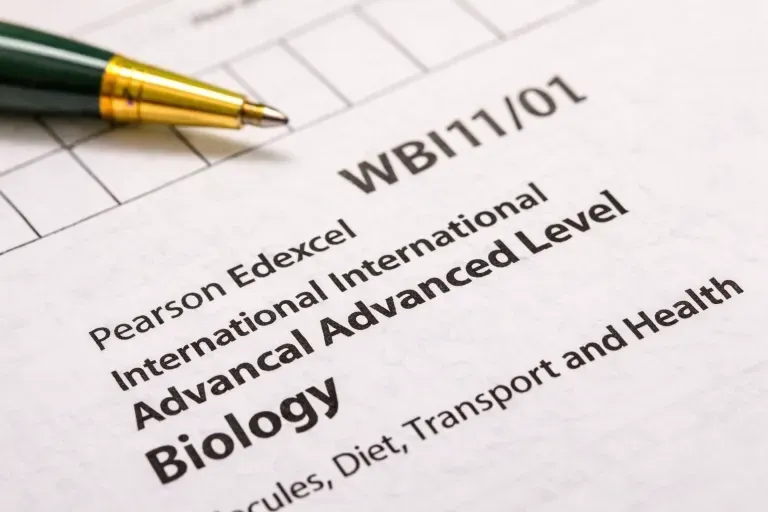Edexcel IAL Biology Notes for 2025 - 2026 Exams
Topic 1: Biological Molecules

1.1 Dipole Nature
The water molecule has unique properties, making it play essential roles in all organisms.
The shared electrons in the water molecule are quite closer to the oxygen atom than the two hydrogen atoms. As a result, the oxygen becomes slightly (partially) negative, while the two hydrogens become slightly positive. These opposite partial charges on each side of the water molecule turn the water molecule into a dipole. Dipole: refers to the separation of opposite charges within the water molecule.
1.2 Hydrogen Bonds
Water molecules are attracted to each other due to their dipolar nature. The partially negative (δ-) oxygen atom in one water molecule is attracted to a partially positive (δ+) hydrogen atom in a neighbouring water molecule. These attractions are known as hydrogen bonds. Hydrogen bonds are weak attraction forces; however, they do affect the properties of different molecules. Other than water molecules, hydrogen bonds do also exist in DNA, proteins, starch and many other molecules. Hydrogen bonds must include hydrogen atoms (δ+) attracted to either oxygen or nitrogen atoms in another molecule. The reason why hydrogen bonds only exist between these specific atoms is that both nitrogen and oxygen atoms tend to be slightly negative (δ-), and they get attracted very well to the slightly positive hydrogen atoms.
1.3 Importance Of Water In Transport
The dipolar nature of water and its ability to form hydrogen bonds explain all the unique properties of water:
a. Water is the transport medium in all organisms (such as blood), and this can be attributed to these properties:
- Water is a good solvent for charged (like salts) and polar molecules (like glucose).
- Water is a liquid over a large temperature range which can be explained by two characteristics:
- i. Water has a high latent heat of evaporation: a large amount of heat energy is needed for water molecules to turn from the liquid state to the gas state.
- ii. Water has a high specific heat capacity: lots of heat energy is needed to raise the temperature of the water. This means that the temperature in water remains relatively stable despite the significant changes in the temperature of the surrounding environment.
Water assists the mass flow of fluids: mass flow is the movement of fluids in one direction down a pressure gradient (from high to low pressure). The circulation of blood is a good example of mass flow. Two essential properties of water help mass flow happen:
- i. Water is cohesive: water molecules stick to each other due to hydrogen bonds.
- ii. Water is adhesive: hydrogen bonds allow water to get attracted to the vessels where it is flowing through.
1.4 Solubility In Water
Polar molecules can be either fully charged like ionic compounds (salts) or partially charged like sugars.
Polar molecules dissolve well in water because water surrounds these molecules and forms bonds with them. Non-polar molecules are usually hydrocarbons (made up of carbon and hydrogen only). They are described as being hydrophobic. Hydrocarbons do not dissolve in water because they cannot form bonds with it.
Size also plays an essential role in solubility; smaller molecules are more likely to dissolve than larger ones.
Try a free Class
IGCSE and IAL Guide for 2025 - 2026 Exams















